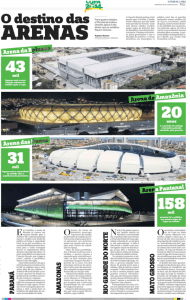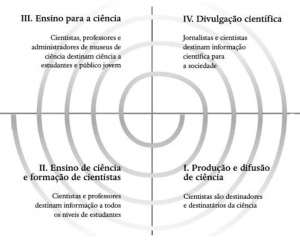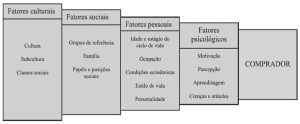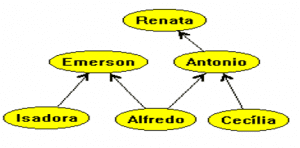SOARES, Welington [1], DENDASCK, Carla Viana [2]
“To emancipate a ignorant, it takes and suffice us to be ourselves, emancipated; that is, aware of the true power of the human spirit. “(RANCIÈRE, 2002 p. 27).
SOARES, Welington. DENDASCK, Carla Viana. The ignorant master: technologies and networked communication interfaces in the ways of intellectual emancipation. Scientific Journal Multidisciplinary Nucleus of Knowledge. Year 01, Vol. 09, Issue 09, pp. 05-22, September 2016. ISSN: 2448-0959
SUMMARY
Reflection brought in this article seeks to walk towards the relations between passages of the book master Ignorant of Jacques Rancière, a work of philosophy of education that aims to discuss current educational methods in the 19th century and contemporary Cyber communication networks, seeking to bring up relevant issues the following question: what are the elements that make the digital networked platforms enabling environment for autonomous construction of knowledge and collective learning , cooperative, decentralized and without a planned method? For this, it is recognised that digital networks are interactive environments, the synergy between people and devices of network communication technology makes up social mediation guide postures, trends and fads. These same networks also are useful tools in the fitting of individuals in the social fabric. Media concern transportation, movement between different territorial and cultural areas, with regard to consumer movements and cultural and ideological exchanges information, networks are lavish in the creation and membership of propagators of concepts and opinantes partners, the participatory digital presence goes beyond the physical and brings in high speed a multiplicity of cultural interfaces. The body acts as transmitter and receiver of information in the network, with its affections and emotions, transfers via networked technologies your impressions and visions everyday electronics joins the expanding dimensions of cognitive communication, networks are infrastructure, but are also production of feel and relations, which go beyond mere connections, who are born of the associations between somatic/technical points distributed its skyline. Taking the communication as a mentor of the transformation dynamics of language and the social compositions the processed material by means of the communication and media networks a semantic significant process stage. Get yourself in the reflection, arguments for criticism and awareness of the necessity of incorporating new identity able to keep up with the technology already engendered.
Key words: networks, interaction, relationships, social, communication.
1. INTRODUCTION
1.1 the Ignorant Master: Brief cut-outs
The experience lived by a French teacher in Dutch territory, interestingly asks a relevant reflection on the possibilities of emancipation that new methodological experiments can provide education in the training of students.
The educational processes until then were in an environment based on traditional methods, these were permeated by the humanist ideology, and also the scholastic positivist (FILARDI, 2002). The 19TH century school supported on repetition, on the authority of teachers and mechanistic and rigid processes. Rancière (2010) argues in his book a method of emancipatory vision, seeking the self-construction of the subject in a differentiated form of approach, using improvisation and creativity, a constructive proposal.
It narrate briefly the famous story that originated such epiphany: as active participant in the revolution of 1789, Joseph Jacotot worked in various institutional functions to the Government, including as a teacher. Jacotot went to exile in the Netherlands when the House of Bourbon and the nobility had their power restored in France in 1814 when Napoleon’s defeat to a coalition of European powers.
In this scenario so is asked to teach to the class of studies in classical languages, however a (initially) great difficulty appears: your students had a minimum knowledge of French and Jacotot, in turn didn’t know Dutch.
To solve the equation that was, Jacotot with an interpreter and a French-Dutch edition of Telemachus, proposed to his class to read that bilingual edition and if exercise in French as much as possible, aware of the difficulties, undertook the proposal without expecting great results (RANCIÈRE, 2010).
To his surprise, the students have fulfilled the task to the satisfaction, demonstrating a level of interpretation as interesting and exciting as any person with a good knowledge of the French language.
This experience revealed to him something that led to strong reflection: teaching could configure without necessarily a master who all explain that the educational methods in force at the time, which placed an excessive emphasis on the elucidações of a master, a teacher, could be rethought (FILARDI, 2002).
From this developed a method that encourages people to develop their skills with more autonomy, leading them to the intellectual emancipation.
The role of the master would not disappear, would be reconfigured, this would fit to propose paths and relate knowledge.
For Jacotot all the intelligences are equal and there is no need for a teacher with full domain of matter’s teaching, but this must accompany the student work once given the object of study and their interfaces (RANCIÈRE, 2002).
To the contrary, the method then used was following dictates more rigid, was a process of explanation and repetition, being so far the quest for emancipation, a method of degradation, where it was common for student submission teacher’s intelligence (FILARDI, 2002).
Emancipation should empower the multisensorial usage “. learn something and that relate to all the rest, according to the principle that all men have equal intelligence “. (RANCIÈRE, 2002).
For Rancière, Jacotot argues that intelligence is developed circumstantially, within specific needs, being so there wouldn’t be a man naturally smarter than another.
Such differences would be in accordance with the effort that the company immediately around and natural conditions require, when the need ceases, the intelligence lies, this is where the will appears as relevant characteristic to exercise such development, it would be a boost for the intellectual path spring, this willingness to continue applying the thinking, employing it constantly even though the surrounding requirements do not require. “The man is a served by an intelligence”. (RANCIÈRE, 2002).
Jacotot developed more than one method, was also a political speech against an exaggerated rationalism and extremely closed systems, so common in scholastic and positivistic method.
His method of intellectual emancipation have universal character, equals the men in its potential for creation, development and work, is a social experiment and transformer spectrum.
But Rancière also comes to the conclusion that his libertarian method is not suitable for formal institutions, linked to the State, church or similar entities, as an emancipatory reasoning does not follow airtight parameters, is self-taught and tentacular, being so little wont to intellectual work, more appropriate institutional environment and free associations, networks of partnerships and spontaneous exchanges of information (FILARDI , 2002).
It’s not about include teaching Universal in programs of the parties nor the intellectual emancipation reformers among the flags of sedition. Only a man can emancipate a man. (RANCIÈRE, 2002 p. 108)
2. CYBER NETWORKS
After this brief introduction to Rancière’s thought, it is a meditative effort between its emancipatory conception and any matches within cyberspace.
Territory of free associations and frequent shares information, transmitted at high speed, virtual networks are quite present in contemporary studies of communication, the concept of the network has been widely cited in the analyses of researchers from various fields (CASTELLS, 1996).
We stop here for fairly simple, in networks as forms of socialization and informational flow.
Basically, digital networks are made up of elements (people, machines and technologies of connection) connected in characteristic patterns, existing in interrelation and rearticulations constants.
In contemporary times, digital networks are strongly interfering in social systems, are common interests, and can have long-term and far-reaching, even with a possible restriction of the aspirations and fugacity that gave rise to those interests: how fast and simple or complex services trade bargains and these come from different cultures and geographical locations.
But fate decided otherwise. Indeed, the lessons of the modest reader flocked quickly students. And, among those who were willing to them bencliciar, a good number ignored the French. Joseph Jacotot, in turn, totally ignored the Dutch. There was therefore no language in which I could instruct them on what you asked for. Despite this, he wanted to respond to their expectations. To this end, it was necessary to establish, among them, at least a common thing. Now, published in Brussels, at that time, a bilingual edition of Telémaco: was found the common thing. (RANCIÈRE, 2002 p. 15)
In the same way as Jacotot found something in common to share with his students, the same principle moves cooperative actions towards autonomy in cyber networks. A subject any or common factor can come into the agenda and generate shocks, which in a process of barter and counterpoints constructs intelecções spontaneous, the quick reach of networks helps in this construction.
In its genesis networks were familiar and private domain (in this passage mean general relations networks, and not just the Internet or any other network), centered in smaller nuclei, these have historically been increasing its range and flexibility, assisted by technology, such as the creation of printing that leveraged an increase in the number of interlocutors and was an important factor in the development of the public sphere [3]as well as the entry of information technologies in everyday life helped to expand strongly this elasticity between these cores (MAFFESOLI, 2006).
In the Internet space, various networks interconnect and Exchange data within a technical structure governed by protocols that allow information in transit between these different networks, there are several models of relational networks by switching among themselves, are these isolated in forums or on opening of social networks (ENNE, 2004).
Common factor in networks is the work and the development of collective, this concept finds support in Rancière’s vision of that intelligence manifests itself in set, is mediated and active in social, having several interfaces and suffering great heterogeneity, is not consensual and brings in the midst of this lack of really sought the tensions that drive their progress into the fabric of society : “So, the social world is not only the world of no reason, but that of unreason, this is an activity of the will, possessed by the passion of inequality”. (RANCIÈRE, 2002).
Do you need social contact networks, networks of mutual aid between associations, networks, cultural or ideological resistance networks, networks contain narrative spaces (RICOEUR, 1997), contextualizações and interactive acts between social agents, meaning, standing in this environment and the pluralism that this confers.
Regarding cyber networks, we have such a structure as the basis for the Organization in social interaction centers.
The diversity in the networks of the Internet and the tensions generated in it refer us to Ranciere when points to the existence of a principle of inequality. But inequalities give pluralism between identities. These inequities should focus on the differences, which should be recognized by the society conferring equal conditions.
“The language itself, which is placed as an instrument of power and submission, is also a means of emancipation, and exists only in the insignia. Only the individual isolated from the contact does not create language, meaning, in this way could be emancipated? (FILARDI, 2002 p 5).
Another important feature of intelligence, education and explicit reasoning in this passage: the role of the will.
According to Rancière, Jacotot argues that in many cases more complex break with little available that some people have with the instruction, learning. And this argument is rather sober. For example, say many times of those for whom he proposes some new statement: “I can’t, I can’t”. Says Rancière, this phrase also means: “I don’t want to, I’m not willing to move, I don’t need this” (RANCIÈRE, 2002).
3. CONSTRUCTION OF KNOWLEDGE ON CYBER NETWORKS CONSTRUCTION
Would be too speculative or precipitated Intuit on the role of will, driven by the need for an arms race which at first developed the Arpanet, the embryo of the Internet, network that later without further pressures a warmongering featured nothing but the will, with the innovative spirit, self-taught and collective of researchers that although didn’t know exactly where they were going If not intimidated to seek development?
The Arpanet (which would later become the Internet), which came in the military environment of the cold war (MATTELART, 1996 p 102) already featured in the elements that today are so common and necessary in systems of digital networks, open architecture, allowing applications and various increments from any developer, real-time interaction, quick exchanges of information, collaborative construction (CASTELLS , 2006).
It is possible to affirm that the Internet today is so vital, conceived as a strictly military use at its birth, the birthplace of its genesis war hasn’t stopped that years later it developed technology and socially in an environment of freedom and decentralization, cooperative learning.
After the end of the cold war, captained by the dismantling of the Soviet Union, the Internet would fall into the arms of the hacker culture as present in the middle of the Decade of 70 University, where fervilhavam ideologies and ideals of innovation (MATELLART, 1996), experimentation and freedom of information, new methods and new results have emerged in this environment of strong independent research and unexpected directions.
However, the experience has exceeded their expectations. He asked students how prepared to write in French what they thought of what they had read. “He was waiting for terrible barbarismos or, even, by an absolute impotence. How, indeed, could all these young people, deprived of explanations, understand and solve difficulties of a new language for them? Anyway, it was necessary to check how far this new path, open by chance, had conducted and what the results of this desperate empiricism. But what was their surprise when he found out that his students, abandoned to themselves, had gone so well in this difficult situation as would many French. It would therefore not take more than want, for power? All men would be, well, virtually capable of understanding what others had done and understood? ” (RANCIÈRE, 2002 p. 16)
As well as the difficulties of a new language stood as a challenge to the students of Jacotot, the language of the Internet did with their Pathfinders, reaching alternative and experimental environments of the hacker culture, which took leading role in the second phase of the development of network communication via Internet, interact not just creating new and potential conditions for technological expansion of channels that would support the relationships between users , as well as in the manufacture of hardware devices.
Driven by the new demands of globalized capital, Commerce and production, the concerns of society for individual freedom and values open communication, more than ever, it was and it is possible to be present in real time, be, learn from the praxis and structuring interests around an agile communication platform in fast development, which required the agility also think , quick decisions and long hours of reflective activity whose demand forced the intellectual emancipation, cooperation and collective intelligence.
4. COMMUNICATION
The intellectual emancipation Ranciére proposed collaborative element needed, the will, and of communication between teacher and students.
To enter a media deal with interpenetrada area for several other disciplines, such as art, literature, psychology, philosophy and psychology. Santaella (2001, p. 76) contends that the communication is positioned as central to the humanities and also go for some natural sciences, though the phenomenon is present in various fields of the communicational and social life, in the world in constant transformation, joins both disciplines as to those that are still consolidated emerging, being common to find elements of communication in character of omnipresence.
But front the situation above, studies on this subject seek to find the place of communication in Humanities, Braga cites a certain holism (BRAGA, 2009) where he discusses that, being expressed everywhere, the communication ends up not being anywhere.
Therefore, there is clearly a need to be within its borders, even though clear and not diluted among the other sciences, also avoid the more logical perspective (and according to Braga, according to our preferences) to reduce the communication to a one-sided view, and thus banish other directions and notes that it can take.
But starting from a specific point, centralizaremos focus on conversation Act, the symbolic exchanges that generate dialogue, and try to achieve this practice with the means of digital networks.
The idea of communicating is closely connected with the usual social, think communication is to see the conversation, is the perception of semantic spaces between the I and the other (BRAGA, 2009), is production of knowledge between interdependent circles of signification.
Taking fragments on the concepts of Ricoeur (1997), the world hits us as text, it is absorbed as (does) and text is text, and this is in conversation, in meaning and structure.
That language is used as an instrument of power. The rhetoric serves as deterrent element of that clarification, too. But the rhetoric is the dialogue between the individual and society, is a representation of their characters. How would the understanding and the communication if they do not share the same ideas?
“The man can be endowed with reason, the citizen may not be. There is no reasonable rhetoric, there is no reasonable political discourse “. But, how can there be a man if not for the language? As there may be language without the speech? As there may be speech without politics? (FILARDI, 2002 p. 16)
The questioning of Ranciere presented by André Filardi is relevant, the language is an instrument of power, convincing, of engagement, the individual dialogue with their peers and consequently to society, individuals make up the society, society echoes the discourse, and language that we do social actors (SHAFIQ, 2012).
In networking, a demand, generated by a momentary need (we should not here understand time as something only fast passenger, but as an interval changeable and refurbished one or more demands), induces a causal link, motivated by personal or collective claims needs at a given moment in history.
This same network becomes a field, a social space of example, governed by its own rules, with short spaces of reply, that even targeted to a single entity, echoing in the collective, creating various effects and interpretations of the message, transcending so a mere path between transmitter and receiver, since the same message reaches simultaneously several receivers in devices and different media (CASTELLS , 2003).
We have a discontinuous flow, the message is re-encoded, shared, fragmented and plus new elements, taking new clothes, being again widespread, revised and revised multidirecionalidade, each new response, new intelecções will follow paths founders of new steps and new flows from discontinuous new interactive stages will come both contribute and complete its shortcomings as generating new disputes in independent directions the networked interactions have the role to organize this flow discontinuity and defaulting it extending as prostheses in somatic experience of conjunction and actor.
Evoking McLuhan (1971) and its aphorism “the medium is the message” we can discuss the question of the format, the extension, the aesthetics of interface means and its appearance and cyber-technology printing on user perception, Marialva Barbosa (2011) gives us his contribution by saying about the world in which we develop our interactions as a communicational environment, where devices extend the cited prostheses and set out our presence in social networks are ipads, mobile phones, tablets, that put us in communication with other users and other apparatus, computers, transport us to concurrency.
We talked with devices that converse with people, which in turn talk to other devices, i.e. established infocomunicacionais and tecnosociais networks with electronic and organic entities, Lemos (2003) points out that such relationship gives life to objects in this metaphorically Prism, emerge so that relationships are more important than the objects themselves, the extraordinary transformations that have taken place at dizzying technological development necessarily drive us to this symbiosis.
Fast change of an analog world to a digital world, radically altered our perceptions of space and time use.
5. THE TIME
The time factor attaches itself to this equation, we live historical moment in which we have witnessed in real time the fall of the twin to[4]wers and messages vibrate in our gadje[5]ts in the exact moment we receive an email.
The walk on a network follow notions of time, speed and sense of displacement in the feed of Telepresence.
The body as a place of convergence receives distinct geographical and cultural stimuli in environments that act like real dimensions, structured landscapes, the embodiment is given by means of avatáricas representations w[6]ith which and through which we interact.
The possibilities generated by such virtual spaces mobilize a social coexistence with others, a “digital life” where bodies are tecnologizados, creating social and virtual webs, forming and being culturally formed.
These transmidiáticas practices linking content in a plot by various languages. Immersive experiences evolve into the experience of activities in the social spaces of everyday life, because the contact even if virtualized real-time occurs between self and other selves interacting each other.
The stimulus generated by such interaction builds narrative immersion in virtual space, and involves the notion of participation. The most varied forms of this dialogue narrative always allow some level of interaction of the individual through the imagination, the Repertoire, the instant history, generating a diversification of interpretations regarding certain story.
The interaction through narratives in a networked virtual environment is because the narrative is based on flexible model, whose phenomena involve a particular generalized knowledge that compose individual know-how with semantics, allowing analogies, acting as a mediator between changeable the Repertoire of each individual and the general cultural pattern.
6. IMMERSION
The immersive factor, condition required the interaction is important part of the relations established in the network and therefore collective learning, conceptual visions about soaking though have several points of convergence, keep several prospects to account for such variation Dominic Arsenault (2005) created classifications for immersive experience: systemic and fictional sensory. This classification model maps the immersion process.
The sensory immersion dimension focuses on the senses and its stimuli within an interactive environment. In it, are the implements and technical tools that nourish consistency and sense of truth, and that most active layer the stimuli of sight and touch, is in this first phase that our perception is the so-called fourth wall, theatre terminology about the imaginary wall on stage that divides and connects fantasy and public.
When you have a systemic immersion we refer to a system of rules governing an environment, which is accepted by the player and allows your cognitive interaction with the automated processes of the fictional world. Would be in the midst of the systemic immersion not only mechanical commands as well as stories, myths, geographical situations and personalities of the characters advance habitat.
The fictional immersion is concerned with the involvement of the subject and the story that surrounds such elements together build a direction of sense, combining a chance, reframing and constantly changing the outcome of the plot.
Curiosity and anxiety generated in the unfolding facts launches the viewer into the atmosphere of involvement and immersion, creating empathy spaces through a projection of expectations between the characters.
Immersion in digital environments help us support for network activities, the sensation of being immersed constitutes very effective mechanism in learning processes.
7. ACTORS IN THE NETWORK
When entering a network, navigation is transmitted in several faces, the digital space allows a constant and fast repagination our personas, avatars give us iconic interface for interaction, technical structure that facilitates the movement of data receives valid if by a brokered interface that bring something of persona, that will be the final vector of a conversational process , a dialectic mediated by chips, cables and pixializados bodies.
They erected on bodies formed by pixels, Act on horizontality provided by the networks (which is apparent, because the digital networks are made up of layers and differentiated access, but within each of these layers exists horizontality) motion that act as disseminating data and creating strategies, resistance, but convergence both important in the process of constructing meaning , of collective intelligence and emancipation (ENNE, 2004).
Castells (2013, p. 168) addresses that network performance, individual or collective actors develop autonomy by following in projects, often of purely personal source, catch up with more receivers echo becoming a collective demand that builds through cooperative exchanges, values and interests, taking in computer networks the platform conducive to this type of organization.
What happens is a transfer of individuation to collective autonomy given by the Constitution of networks of mutual interest, the Web of affinities within that system creates new and parallel systems, coexisting, associating or going into shock, and can be displayed as coordinates.
Barbero inserts these systems on two axes: a history of long duration, located between the cultural and industrial formats arrays, and other synchronous, giving an account of the logic of production in its relationship with what he calls “skills of reception and consumption” (BARBERO, 2004, p. 230). A system that thinks, and when the communicational phenomenon is perceived as such, loses spontaneity and if discusses, as becomes aware of itself, allowing this question, and therefore question your ecosystem and as a whole tradition and questioned Jacotot teaching, rethinking itself is more a play on intellectual emancipation.
No man on Earth who hasn’t learned anything by himself and without master tutor. Let’s call this way of learning “Universal Education” and we can say: “the Universal Education exists, in fact, since the beginning of the world alongside all tutors methods (RANCIÈRE, 2002 p. 28).
Factors of this state of science that involves the collaborative and cultural sphere, rely on entrepreneurs of associative activities that weave wires against the spheres of commercial production, the perception of the actors in the use of tools from the commercial axis, and productive state does not prevent its use in Systematics of the values of this same axis, which, if in a face dulls independent initiatives and copyright in another provides materials which may be used by producer groups of cultural matrices and independent production, seeking receptivity in network environments through the process of consumption of goods and concepts.
8. ARTIFACTS
We have communication practices basic pillar of relations and the press, and although the role of technology in this process is sometimes minimized his involvement, as a vehicle of these practices is of paramount importance.
Now, of course, the network technology is not the cause of ideological clashes, philosophical, economic and cultural that move the social wheel, these are born of tensions that are erected within the community itself, but deny its role in the strength of the echo that travels between hearts and minds is at least meaningless (SHAFIQ, 2012).
The very presence of such means as something tangible helps us inquire about the communicational process, since the apparent intangibility of the process itself is likely to be critical with the aid of this penetrable to empiricism and body mass not only intuitive observation, communication networks alone do not give the body communication (BARNES, 2011), but are reference tools that allow us to a visible point of investigation and questioning.
This is the space where the phenomenon of communication organizes and receives his impression of omnipresence.
The technological artifacts that we carry, contains solidity and keep memory of our actions in communication, books, radio, newspapers, televisions, photography and digital media provide us with the comfortable interface, dialogue with us in the task of interpreting the world, are the Middle, the matrix aesthetic that semantiza our processes.
Interestingly for more decanted that can be the digital space, we must not lose sight of its instrumental character (like network consisting of computers, cables and access protocols), in this perspective, such space is an environment that requires interactive agents, so its informational and social character emerges surpassing the sphere of mere instrumentality.
An interesting factor of the use of digital communication platforms is decentralised structure, its composition as a large network made up of several other networks that demand this decentralization.
In the urban social fabric have the macro society and her smaller nuclei of relationship and conduct, even if repeated in the communication Cybernetics, and as such, this is a mutant, disappears and resurfaces, advances borders, absorbing participants scattered loosely out of rigid hierarchies and physical spaces overloaded.
9. FINAL CONSIDERATIONS
Telemachus entered the life of Joseph Jacotot and was the instrument of a whole new methodological perception that evolved in group.
The communication refers to a collective Act, the construction of sense and learning, the social, cultural and historical structures and policies and their correlations, language, conversation and means that the transport and form, estetizando the world to make it understandable, interfacing the subject and the element that dialogues with this.
Relates, invites you to think about this relationship, and the inquiries between subject and technological networks, other than writing, speaking, printing, social networks, Internet and alternative networks, are the man in the world, give you an active role and carry beyond the I, externalizes cognitive processes by language that devices created by the man himself format in different semantic levels expand their potential as connect somehow the Telemachus was a solution of improvisation, but also, in small scale, a philosophical experience, our individual discoveries in dialogues with the collective of the networks I would be?
Networks can be designed in various perspectives, as systems of integration among people following social practices and codes organized interaction, as symbolic exchanges of cultural property, such as business tools, globalization brought clearly the vision of networked systems, connecting a network society (CASTELLS, 1996) that is used to break down geographic and temporal boundaries, to understand the degree of interpersonal partnership facilitator , breaking even borders between private and public, introducing “grains of sand in the gears” of collective learning.
As you can see in the book, the process broke the master Jacotot, who developed an interactive experience and had as a result the learning without teacher tutor, but not without master. Soon, the role of the master continues, he communicates something that worries us, but learning of each follows, the master introduces the way students do for themselves, cyber networks found several ones that can serve as indicators of masters directions as well as we can do the same for other individuals.
The aforementioned characteristics prompted the search for free flow of information, which the associational character changed, the fast real-time interaction and integration that breaks localities and temporalities, despite the different intentions and ideology, the network communication follows intricacies well ritualized and capable of reconfiguration and intercambiamento, and of interesting possibilities for collective learning.
REFERENCES
ARSENAULT, d. Dark Waters: Spotlight on Immersion. In: Game On North America. Conference Proceedings, 2005, p. 5052.
BARBOSA, Marialva. Research on communication in Brazil we don’t have to be afraid of contagion. Rio de Janeiro. Intercom, 2011.
BRAGA, José Luiz. 2011. Constitution of the field of communication. Magazine verse and reverse. 2008.
CASTELLS, M. The Internet Galaxy: reflections on the internet, business and society. Rio de Janeiro. Zahar. 2003.
CASTELLS, M. The network society. The information age: economy, society and culture; v. 1. São Paulo: Peace and Earth, 1996.
CASTELLS, networks of indignation and Hope. Rio de Janeiro. Zahar. 2013.
ENNE, Ana Lucia n. network Concept and Contemporary societies; Communication and information. Goiás, 2004.
FILARDI, André, RANCIÈRE, Jacques. The ignorant master: five lessons in intellectual emancipation. Trad. Lily of the Valley. Belo Horizonte: Authentic, 2002.
LAMBERT, André. Glimpses of cyberculture. Porto Alegre: Sulina, 2003.
LÉVY, Pierre. Cyberculture. Rio de Janeiro: Editora 34, 1999.
MAFFESOLI, Michel. The time of tribes: the decline of individualism in mass societies. 4th ed. Rio de Janeiro: University Forensic, 2006.
MATELLART, Armand. The World history of ideas and Communication strategies. Clash of ideologies. Petrópolis: Vozes, 1996.
McLuhan, m. the media as extensions of man. Rio de Janeiro, Cultrix, 1971.
RANCIÈRE, Jacques. The Ignorant Master: Five lessons in Intellectual emancipation. Belo Horizonte, Authentic, 2010.
RICOEUR, Paul. Time and narrative. Campinas, SP: Papirus, 1997.
SHAFIQ, Muniz. 2012. Communication, a field in trouble. Matrix magazine, 5 (2): 1127.
[1] Master’s degree in language and Communication from Universidade Tuiuti: contact: [email protected]
[2] Theologian, master and PhD in Clinical Psychoanalysis, master in Bioethics, a researcher at the Center for research and advanced studies. Contact: [email protected]
[3] For the German philosopher Jürgen Habermas, the public sphere represents a social dimension that acts as a mediator between the State and society, in which the public is organized as a carrier of public opinion.
[4] http://www.portalangop.co.ao/angola/pt_pt/noticias/politica/2014/8/37/AtentadoscontraTorresGemeascompletamhojetrezeanos,
23ac33e5836c451382a0be56d6c4194c.html 9/27/2015 access.
[5] Devices with functions defined for daily practices, long associated with digital devices.
[6] The meaning of Avatar comes from Sanskrit and means something red, contained in a material form.






